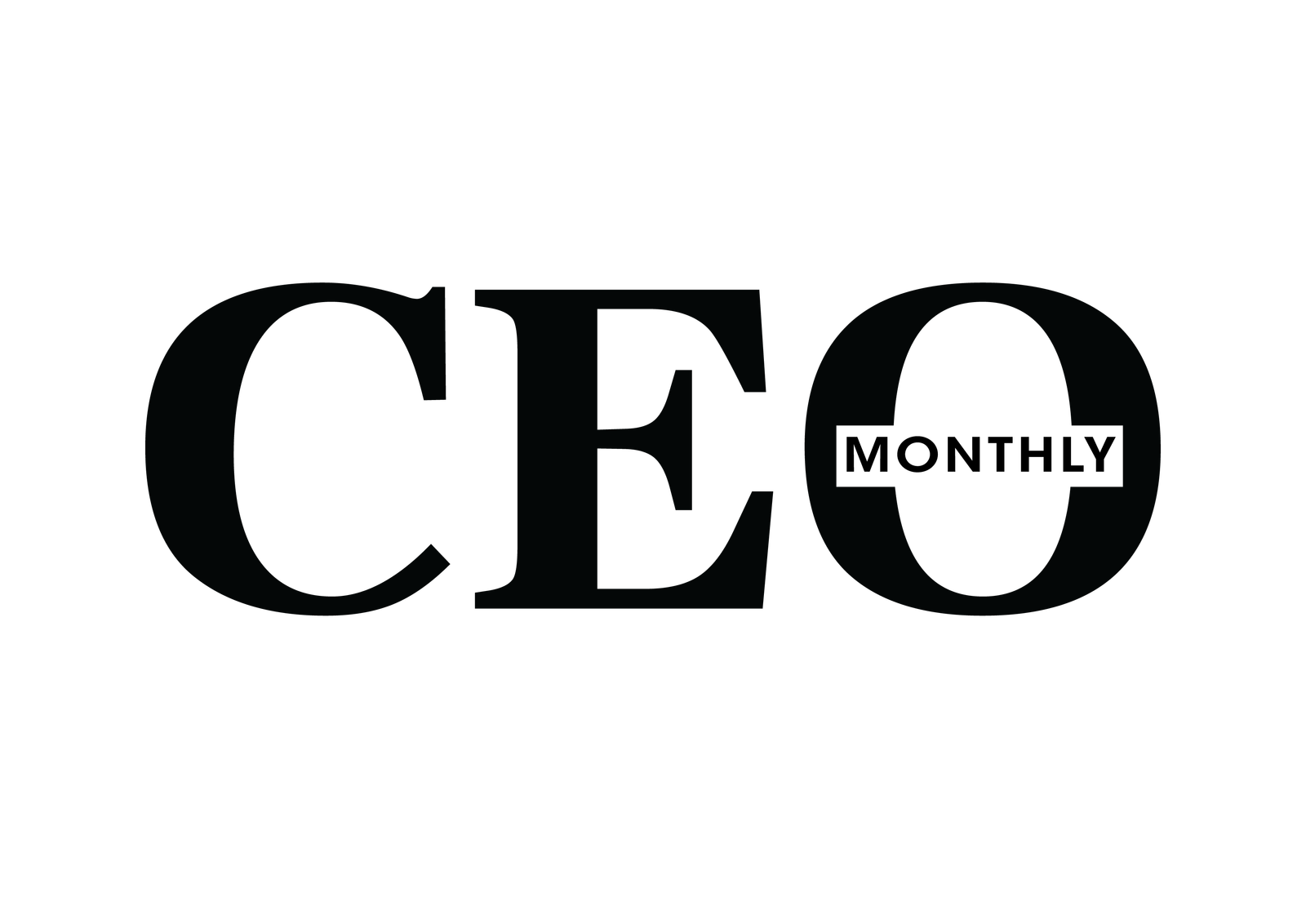Did you know that businesses make an average of $2 in revenue for every $1 they spend on PPC advertising? That’s a staggering 100% return on investment! Pay-Per-Click (PPC) advertising offers unparalleled precision in targeting your audience, immediate visibility, and measurable results – making it an indispensable tool for maximizing ROI in the digital marketing landscape.
In this article, we’ll delve into the power of PPC advertising and how it can drive targeted traffic to your website. We’ll explore how PPC campaigns provide immediate and measurable results, allowing you to continuously optimize your strategy for better returns. We’ll also discuss cost-effectiveness, budget control, and the impact of PPC advertising on your overall ROI. So, let’s dive in and discover how you can harness the precision of PPC to maximize your business’s success!
Key Takeaways:
- PPC advertising offers an average of 100% ROI, making it a highly lucrative marketing strategy.
- Precision targeting allows businesses to attract highly relevant and engaged traffic.
- PPC campaigns provide immediate visibility and measurable results.
- Businesses have complete control over their budget, ensuring cost-effectiveness.
- Continuous optimization of PPC campaigns can significantly impact ROI.
The Power of PPC Advertising
PPC advertising is a highly targeted and cost-effective method that allows businesses to drive traffic and achieve measurable results. Unlike traditional advertising methods, PPC offers precise audience targeting based on demographics, interests, locations, and devices used. With PPC, businesses can reach their target audience with precision, ensuring that their ads are shown to the right people at the right time.
PPC advertising offers immediate visibility as ads are displayed as soon as the campaign goes live. This means that businesses can start attracting targeted traffic and potential customers almost instantly. PPC campaigns provide real-time data and metrics, such as clicks, impressions, conversions, and costs, allowing businesses to analyze and make adjustments to optimize their campaign performance.
One of the key advantages of PPC advertising is its cost-effectiveness. With PPC, businesses only pay when their ads are clicked, making it a cost-effective digital marketing strategy. It also offers budget control, allowing businesses to set daily or monthly limits on ad spending, ensuring that they stay within their budget while maximizing results.
Overall, PPC advertising is a powerful tool that can help businesses drive targeted traffic, generate immediate and measurable results, and achieve a high return on investment (ROI).
Let’s take a closer look at the impact of PPC advertising on businesses and how they can leverage this cost-effective digital marketing strategy to enhance their online presence and drive business growth.
Driving Targeted Traffic
One of the key benefits of PPC advertising is the ability to attract highly targeted traffic to your website. With precision targeting, you can define specific demographics, interests, locations, and devices of your target audience. By showing your ads to users who are more likely to engage, you increase the chances of conversion and maximize the return on your investment.
Unlike traditional advertising methods, PPC allows you to reach high-intent users actively searching for specific products or services. This means that the traffic you generate through PPC campaigns has a higher potential for conversion compared to other sources. By focusing your efforts on reaching the right audience, you can increase your chances of converting clicks into leads or sales.
To illustrate the power of precision targeting, consider a scenario where a fitness equipment company wants to promote its new line of adjustable dumbbells. By targeting fitness enthusiasts and individuals searching for workout equipment, the company can ensure that its ads are presented to the most relevant audience. This focused approach not only drives targeted traffic but also increases the likelihood of converting those visitors into actual customers.
Furthermore, precision targeting enables you to optimize your budget by directing advertising spend towards the most valuable segments of your target audience. Instead of wasting resources on irrelevant clicks, you can allocate your budget to reach the users who are more likely to convert. This level of control ensures that your investment is being utilized effectively, resulting in a higher return on investment.
Driving targeted traffic through PPC advertising requires a deep understanding of your audience and their preferences. By continuously analyzing and refining your campaigns, you can tailor your ads to resonate with your target audience, increasing the chances of conversion. Remember, the key to success lies in precision targeting and capturing the attention of high-intent users who are actively seeking the products or services you offer.
Targeted Traffic: A Case Study
“Our company, XYZ Electronics, was struggling to attract the right audience to our website. We invested in a PPC campaign tailored to target tech enthusiasts interested in the latest gadgets. By defining specific demographics and interests, we were able to reach users who were more likely to engage with our ads. The results were remarkable – our website traffic increased by 40%, and our conversion rates skyrocketed. The precision targeting of PPC advertising unlocked a whole new level of success for our business.”
To better understand the driving force behind targeted traffic, let’s take a closer look at the concept of precision targeting.
Immediate and Measurable Results
One of the key advantages of PPC advertising is its ability to provide immediate visibility. As soon as a PPC campaign goes live, ads are displayed to the intended audience, driving traffic to the website almost instantly. This immediate visibility allows businesses to capture the attention of potential customers and generate immediate interest in their products or services.
Furthermore, PPC campaigns offer the advantage of measurable results. By tracking metrics such as clicks, impressions, conversions, and costs, businesses can gain valuable insights into the performance of their campaigns. This data-driven approach allows for in-depth analysis and evaluation of the effectiveness of different strategies and tactics.
Data-driven adjustments play a critical role in optimizing PPC campaigns for maximum results. By analyzing the performance metrics, businesses can identify areas for improvement and make data-driven adjustments to their campaigns in real time. This iterative process ensures that the campaigns are continuously refined and optimized to achieve better outcomes.
Here’s an example of how the data-driven approach in PPC advertising can lead to measurable results:
A company launched a PPC campaign promoting their new product. By analyzing the campaign data, they discovered that the ads were receiving a high number of impressions but a low click-through rate (CTR). This indicated that the ads were not effectively enticing users to click and learn more about the product.
Based on this insight, the company decided to revise their ad copy and make it more compelling and enticing. They also refined their targeting strategy to reach a more relevant audience. These adjustments resulted in a significant increase in the CTR and ultimately led to a higher number of conversions and sales.
By leveraging immediate visibility, measuring results, and making data-driven adjustments, businesses can optimize their PPC campaigns to achieve the best possible outcomes and maximize their return on investment.
Cost-Effectiveness and Budget Control
One of the key advantages of PPC advertising is its cost-effectiveness and budget control. Businesses have complete control over their budget, allowing them to set daily or monthly limits on ad spending. This level of control ensures that businesses can allocate their resources efficiently and effectively.
With the pay-per-click model, businesses only pay when their ad is clicked. This means that the cost is directly linked to the performance of the ad campaign. By only paying for actual clicks, businesses can ensure that their advertising budget is used efficiently to reach potential customers.
PPC advertising provides a cost-effective way to connect with target audiences and drive traffic to the website. The ability to control spending and pay only for clicks makes it a highly flexible and cost-efficient advertising model for businesses of all sizes.
Furthermore, the data-driven nature of PPC advertising allows businesses to optimize their campaigns based on performance. This optimization process helps to eliminate wasted ad spend by focusing on the keywords and ad placements that generate the most conversions and deliver the best return on investment (ROI).
Benefits of PPC Advertising
| Benefits | Description |
|---|---|
| Cost-Effectiveness | Businesses only pay for clicks, ensuring efficient use of budget. |
| Targeted Reach | Reach specific demographics, interests, and locations to maximize conversion opportunities. |
| Immediate Results | Ads are displayed as soon as the campaign goes live, driving traffic almost instantly. |
| Measurable Analytics | Access detailed metrics to analyze ad performance and make data-driven optimizations. |
| Flexibility | Set daily or monthly budgets, adjust ad copy and targeting as needed. |
Impact on ROI
The ultimate goal of any marketing effort is to generate a positive Return on Investment (ROI), and Pay-Per-Click (PPC) advertising is no exception. By strategically implementing and optimizing PPC campaigns, businesses can significantly impact their ROI and drive higher conversion rates.
PPC campaigns allow businesses to target high-intent users actively searching for specific products or services. By reaching these potential customers at the right moment, businesses can increase their chances of generating conversions and achieving a positive ROI.
One of the key advantages of PPC advertising is the ability to track and analyze campaign performance. This data-driven approach allows businesses to identify which ads are performing well and optimize their campaigns accordingly. By continuously refining their targeting, ad creatives, and landing pages, businesses can improve the effectiveness of their PPC campaigns and maximize ROI over time.
Optimizing ads involves using relevant keywords, testing different ad variations, and leveraging compelling ad copy to engage users and drive conversions. By identifying the most effective ad elements and continually refining them, businesses can enhance their PPC campaigns’ impact on ROI.
Here are some key ways to optimize PPC ads for maximizing ROI:
- Perform comprehensive keyword research to identify high-traffic, low-competition keywords that resonate with the target audience.
- Craft compelling ad copy that highlights the unique benefits of the products or services being advertised.
- Utilize ad extensions, such as site links and callout extensions, to provide additional information and enhance the visibility of the ads.
By implementing these optimization strategies, businesses can improve the performance of their PPC campaigns, drive higher conversion rates, and ultimately achieve a more favorable ROI.
Impact of PPC Campaign Optimization on ROI
| Optimization Strategy | Impact on ROI |
|---|---|
| Keyword Research | Identifying high-traffic, low-competition keywords that resonate with the target audience leads to more relevant clicks and higher conversion rates, resulting in an improved ROI. |
| Ad Copy Optimization | Creating compelling ad copy that highlights the unique benefits of products or services improves click-through rates and conversions, contributing to a higher ROI. |
| Ad Extensions | Utilizing ad extensions expands ad visibility and provides additional information, increasing the chances of user engagement and conversions, thereby enhancing the ROI. |
Leveraging Remarketing for Enhanced ROI
Remarketing is a powerful feature within PPC advertising that can significantly boost your Return on Investment (ROI). By re-engaging users who have previously visited your website but haven’t completed the desired action, remarketing provides an opportunity to maximize conversions and increase your overall ROI.
Through strategic placement of targeted ads across various platforms, you can effectively reach out to these users and encourage them to revisit your site. By reminding them of your products or services, you can reignite their interest and prompt them to take the desired conversion action.
Remarketing allows you to tailor your ads specifically to this audience, increasing the chances of capturing their attention and encouraging them to convert. With personalized messaging and compelling offers, you can create a sense of urgency and motivation that drives users back to your website.
Moreover, remarketing emphasizes the power of repetition in marketing. By consistently exposing users to your brand and messaging, you can stay top-of-mind and increase your chances of converting them into customers.
Implementing a remarketing strategy allows you to make the most out of your existing website traffic. Rather than letting potential conversions slip away, remarketing enables you to re-engage users who have already shown an interest in your brand or products. By nurturing these leads, you can maximize conversions and ultimately enhance your ROI.
By leveraging remarketing within your PPC campaigns, you can unlock the full potential of your advertising efforts. Re-engage users who have previously shown an interest in your brand to maximize conversions and enhance your overall ROI.
Comprehensive Keyword Research
A solid PPC campaign begins with comprehensive keyword research. In order to effectively reach the target audience and drive high-traffic, businesses need to identify keywords and phrases closely related to their products or services. By understanding what keywords resonate with their audience, businesses can optimize their PPC campaigns for maximum visibility and conversions.
Tools like Google Keyword Planner and SEMrush can be invaluable in this process. They allow businesses to discover high-traffic, low-competition keywords that are relevant to their industry. By leveraging these tools, businesses can gain insights into search trends and popular keywords, helping them craft targeted and compelling ad content.
Google Keyword Planner
Google Keyword Planner is a powerful tool provided by Google that allows businesses to find relevant keywords and get data on search volumes and competition. It provides valuable insights into search trends and offers suggestions for related keywords. By utilizing this tool, businesses can identify high-traffic keywords that are relevant to their products or services. This information helps them tailor their PPC campaigns to attract the right audience and maximize their ROI.
SEMrush
SEMrush is another popular keyword research tool that provides in-depth keyword analysis. It allows businesses to discover low-competition keywords that their competitors might be missing out on. With SEMrush, businesses can gain a comprehensive understanding of their target audience’s search behavior, enabling them to create highly optimized campaigns that resonate with potential customers.
By conducting comprehensive keyword research using tools like Google Keyword Planner and SEMrush, businesses can gain a competitive edge in their PPC campaigns. Targeting high-traffic, low-competition keywords that resonate with their target audience will increase their chances of driving quality traffic and achieving their desired conversions.
Crafting Compelling Ad Copy
In order to maximize the effectiveness of a Pay-Per-Click (PPC) advertising campaign, it is essential to craft compelling ad copy that engages the target audience and drives conversions. Ad copy serves as the first point of contact between the business and its potential customers, making it crucial to capture their attention and clearly communicate the unique benefits of the products or services being advertised.
The ad copy should be directly tied to the chosen keywords to ensure relevance and increase the likelihood of attracting qualified leads. By aligning the copy with the keywords, businesses can enhance the visibility of their ads and improve their chances of reaching the right audience. Additionally, incorporating targeted ad extensions, such as site links and callout extensions, can provide users with additional information and further enhance the visibility and appeal of the ads.
When crafting ad copy, it is important to adopt a persuasive and concise writing style that effectively communicates the unique selling points and benefits of the products or services. Businesses should focus on highlighting what sets them apart from their competitors and why potential customers should choose them. This can include features like exclusive offers, discounts, guarantees, or exceptional customer service.
Here is an example of ad copy showcasing the unique benefits of a fictional product:
“Experience the ultimate comfort with XYZ Shoes. Our innovative technology provides superior arch support, cushioning, and breathability, ensuring all-day comfort for your feet. Enjoy the perfect combination of style and functionality with XYZ Shoes. Try them today!”
By crafting compelling ad copy that effectively communicates the unique benefits and resonates with the target audience, businesses can significantly enhance the performance of their PPC campaigns and drive higher conversion rates.
Ad Copy Examples:
| Product | Ad Copy |
|---|---|
| XYZ Fitness Tracker | Track your progress, achieve your fitness goals with XYZ Fitness Tracker. Monitor your heart rate, calories burned, and sleep quality. Stay motivated on your journey to a healthier you! |
| ABC Vacuum Cleaner | The ultimate cleaning solution in one powerful device. Say goodbye to dust and dirt with the ABC Vacuum Cleaner. Experience a cleaner home with ease and efficiency. Get your ABC Vacuum Cleaner today! |
| 123 Digital Marketing Course | Master the art of digital marketing. Enroll in the 123 Digital Marketing Course and gain the skills to succeed in the digital world. Start your journey to digital marketing excellence now! |
Precise Ad Targeting
Maximizing the Return on Investment (ROI) and building trust with PPC advertising requires precise ad targeting. By utilizing audience targeting options, businesses can ensure that their ads reach the right demographics and interests. Geographic targeting is also an effective strategy to focus on regions where the products or services are in high demand.
Precise ad targeting allows businesses to deliver personalized messages to the relevant audience, increasing the chances of engagement and conversion. By understanding the audience demographics and interests, businesses can create compelling ad campaigns that resonate with their target market.
With the variety of audience targeting options available, businesses can define specific parameters to reach their ideal customers. This includes demographics such as age, gender, income, and education level, as well as interests and behaviors. By narrowing down the target audience, businesses can ensure that their ads are seen by the most relevant prospects, leading to higher conversion rates and improved ROI.
Geographic targeting is another crucial aspect of precise ad targeting. By focusing on specific geographic regions where there is a demand for the products or services, businesses can optimize their ad spend and maximize their advertising efforts. Whether it’s targeting a specific city, state, or country, geographic targeting allows businesses to tailor their messaging to the needs and preferences of specific locations.
Businesses should consider conducting thorough market research to identify the demographics and geographic regions that align with their target audience. By understanding their audience’s characteristics and preferences, businesses can create highly targeted ads that are more likely to resonate and generate desired actions.
Benefits of Precise Ad Targeting:
- Increased relevance: Ads are more likely to appear to users who are genuinely interested in the products or services being advertised.
- Higher conversion rates: Precise ad targeting ensures that ads are shown to users with a higher propensity to convert, increasing the chances of generating leads or sales.
- Cost efficiency: By reaching the right audience, businesses can optimize their ad spend and avoid wasting resources on irrelevant impressions or clicks.
- Improved brand perception: Precise ad targeting allows businesses to deliver personalized messages that resonate with their target audience, enhancing brand perception and customer trust.
By leveraging the power of precise ad targeting, businesses can optimize their PPC advertising campaigns to deliver the right message to the right audience at the right time, maximizing ROI and achieving their desired marketing objectives.
Optimizing Landing Pages
A well-optimized landing page is crucial for converting clicks into leads or sales. To maximize the effectiveness of your PPC campaigns, it’s important to create landing pages that are user-friendly, provide clear information, and drive visitors to take action. Here are some key considerations for optimizing your landing pages:
User-Friendly Design
When designing your landing pages, prioritize a user-friendly layout and navigation. Keep the design clean and visually appealing, with easy-to-read content and clear headings. Ensure that the page loads quickly to avoid losing impatient visitors. By providing a pleasant browsing experience, you can keep users engaged and encourage them to explore further.
Clear Call-to-Action (CTA)
A strong and compelling call-to-action is crucial for driving conversions. Clearly communicate what action you want users to take, whether it’s making a purchase, filling out a form, or subscribing to a newsletter. Use attention-grabbing buttons or links that stand out from the rest of the content. By guiding users towards the desired action, you increase the likelihood of conversions.
Mobile Optimization
With the increasing use of mobile devices for browsing and purchasing, it’s essential to optimize your landing pages for mobile users. Ensure that the page is responsive and adapts seamlessly to different screen sizes. Prioritize mobile-friendly design elements and ensure that the content is easily readable on smaller screens. By catering to mobile users, you can provide a positive experience and maximize conversions.
By optimizing your landing pages with user-friendly design, clear call-to-action, and mobile optimization, you can enhance the effectiveness of your PPC campaigns and drive higher conversion rates. Remember to continually test and refine your landing pages to ensure they provide the best possible experience for your visitors.
Conclusion
PPC advertising is a dynamic and results-driven tool that businesses can leverage to maximize their ROI. By strategically implementing and continuously optimizing PPC campaigns, businesses can unlock the full potential of this powerful advertising method. With its precision and flexibility, PPC advertising allows businesses to increase brand visibility, drive conversions, and achieve tangible results in terms of revenue growth.
To maximize ROI, businesses must carefully plan their PPC campaigns and continuously optimize them based on performance data. This involves conducting comprehensive keyword research to target high-traffic, low-competition keywords that resonate with the target audience. Additionally, crafting compelling ad copy that highlights the unique benefits of the products or services being advertised is crucial.
Precise ad targeting and optimization of landing pages also contribute to maximizing ROI. By targeting the right demographics and geographies with their ads, businesses can ensure that their advertisements reach the most relevant audience. Furthermore, optimizing landing pages for user-friendliness, mobile compatibility, and clear call-to-action ensures a seamless user experience and higher chances of conversion.
In conclusion, PPC advertising offers a powerful opportunity for businesses to maximize their ROI. By continuously optimizing their campaigns and leveraging the precision of PPC advertising, businesses can increase brand visibility, drive conversions, and ultimately achieve higher returns on their investment.
FAQ
What is PPC advertising?
Why is PPC advertising considered cost-effective?
How does PPC advertising drive targeted traffic?
How can I optimize my PPC campaigns to increase ROI?
What is remarketing and how can it help improve ROI?
How important is keyword research in PPC advertising?
What makes compelling ad copy for PPC campaigns?
How can I ensure precise ad targeting in my PPC campaigns?
Why is landing page optimization important for PPC advertising?
Source Links
- https://www.linkedin.com/pulse/maximizing-roi-understanding-impact-ppc-advertising-business-j0ksc
- https://www.linkedin.com/pulse/maximizing-roi-pay-per-click-advertising-saas-companies-talcf
- https://www.virtualvision.com/article/maximizing-roi-with-pay-per-click-ppc-advertising-strategies-for-success







